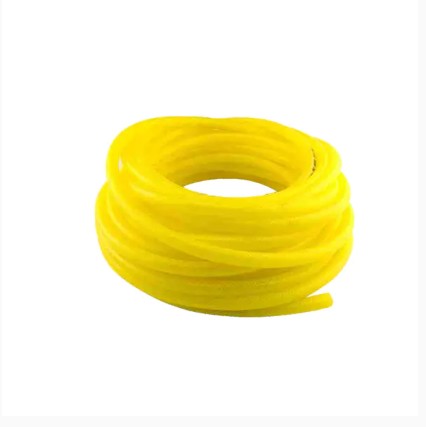
Maintaining and Extending the Lifespan of PU Flexible Hoses: Best Practices
Polyurethane (PU) flexible hoses are essential components in numerous industrial and commercial applications, prized for their flexibility and durability. However, like any other equipment, they require meticulous care to ensure a prolonged and trouble-free service life. In this article, we'll delve into best practices for maintaining and extending the lifespan of PU flexible hoses.
Proper Storage: Storing PU hoses properly is the initial step toward ensuring their longevity. When not in use, it's crucial to keep them in a cool, dry location away from direct sunlight and extreme temperatures. Hanging them on hose racks or reels is a wise practice to prevent kinks and potential damage.
Prevent Sharp Bends and Kinks: Premature hose failure often results from excessive bending, sharp angles, or kinking. To avert these issues, utilize hose guides or clamps to maintain the recommended bending radius. Excessive bending can compromise the inner layers, leading to leaks or ruptures.
Shield Against Abrasion: PU hoses might encounter abrasive surfaces or sharp edges during operation. To protect against abrasion damage, employ protective covers or sleeves in areas where contact with abrasive materials is likely. These sleeves act as a buffer, safeguarding the hose from wear and tear.
Regular Inspection: Routine inspections are fundamental to hose maintenance. Periodically examine the hose for visible signs of wear, damage, or leaks. Detecting issues promptly allows for swift replacement, mitigating potential costly downtime.
Maintain Cleanliness: Keeping hoses clean is essential for their longevity. Regularly flush them with water to remove debris and contaminants. Exercise caution when using cleaning agents, as harsh chemicals or solvents can harm the PU material. Opt for mild detergents or adhere to manufacturer-recommended cleaning procedures.
Handle with Care: Handle PU hoses gently to prevent unnecessary stress and damage. Avoid dragging hoses across rough surfaces, and never subject them to the weight of heavy equipment or vehicles. Implementing proper handling procedures can significantly extend the life of your hoses.
Fittings and Connections: Ensure that your hoses are equipped with compatible connectors and fittings. Tighten them properly to prevent leaks or damage. Over-tightening or under-tightening fittings can lead to issues, so adhere to manufacturer guidelines for installation.
Temperature and Chemical Compatibility: Choose hoses designed to handle the temperature and chemical compatibility requirements of your specific application. Exposure to incompatible chemicals or extreme temperatures can result in hose degradation and reduced lifespan.
Maintain Pressure Control: Operate the hose within its rated pressure limits. Exceeding these limits can lead to hose failure. Consider incorporating pressure regulators or relief valves in your system to maintain safe pressure levels.
Prevent Torsion: Torsion, or twisting of the hose during installation or use, can weaken the hose structure and cause premature failure. Take precautions to prevent torsion, such as ensuring proper alignment and routing of the hose.
Implement a Maintenance Schedule: Establishing a regular maintenance schedule is essential to keep your PU hoses in prime condition. This schedule should include periodic inspections, cleaning, and preventive maintenance tasks tailored to your specific application and environmental conditions.
Proper Storage of Coiled Hoses: If your setup involves coiled PU hoses, take care not to over-coil or stretch them excessively when they're not in use. Such practices can lead to damage and reduce the overall lifespan of the hoses.

 English
English 简体中文
简体中文



